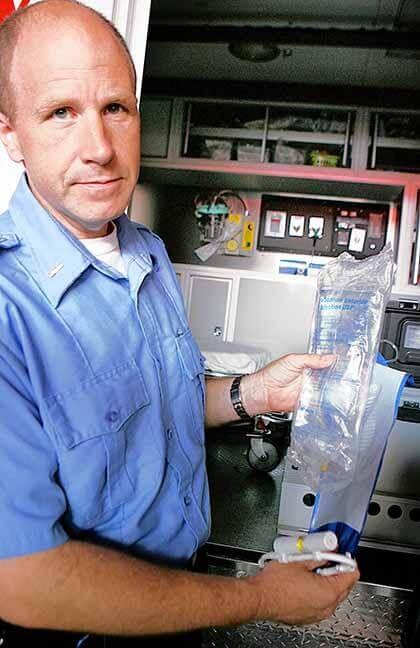By Rebecca Henely
Mayor Michael Bloomberg and city Fire Commissioner Salvatore J. Cassano visited Elmhurst Hospital Monday to announce that paramedics across the city can now administer hypothermia therapy, a process by which cold saline can be injected into patients to prevent damage caused by cardiac arrest.
“Today we’re taking another big step to improve on what we do best: saving lives,” Cassano said in a press release from the mayor’s office.
According to the release, all paramedics on the 911 system ambulances began providing the therapy Sunday.
Lt. Bill Rich of EMS Station 46 in Elmhurst said that in hypothermia therapy, if a patient is not immediately resuscitated by defibrillator shocks, chilled saline kept at 4 degrees Celsius is pumped into the body to reduce its temperature from 37 degrees Celsius to 32 degrees Celsius for 24 hours.
The saline is kept in a 2-liter pack, which can be emptied into a human body within four minutes. About 100 advanced life support ambulances have been outfitted with the refrigeration equipment to store the saline.
The hoped-for results is that muscle and tissue damage will be halted and neurological function will be preserved for patients who go into cardiac arrest, the release said.
“Hypothermia therapy slows down the brain’s demand for oxygen, which in turn can prevent damage to brain cells resulting from cardiac arrest,” Bloomberg said in the release.
This treatment will not be given to those 17 and younger, with fluid in their lungs or who have suffered trauma, the release said.
The introduction of hypothermia therapy into ambulances was phase 2 of Project Hypothermia, an initiative built on a partnership between the city EMS and the Greater New York Hospital Association. Phase 1, which began in January 2009, introduced hypothermia therapy into city hospitals. A release from the mayor’s office said that since then the survival rate of cardiac arrest patients has gone up by 20 percent and the amount of those patients discharged from hospitals has increased by 30 percent.
“With our paramedics beginning this treatment sooner in the field, even more patients are going to benefit and we’re going to do an even better job of saving and improving the lives of affected New Yorkers,” Cassano said.
Photo editor Christina Santucci contributed to this article.
Reach reporter Rebecca Henely by e-mail at rhenely@cnglocal.com or by phone at 718-260-4564.































